5 Bunion Exercises You Can Do for Pain Relief
Updated: Jun. 10, 2021
When your great toe is causing you great bunion-related pain, try these expert-approved bunion exercises that may help reduce and prevent pain.
Living with bunion pain
If you have a bunion, you’re likely very familiar with the pain and discomfort this type of foot deformity can cause. Maybe you’ve tried ice or medication or wearing more comfortable shoes to ease the ache.
Bunions can only be corrected through surgery, but the outcome’s not guaranteed and the recovery can be long and painful.
Stretching and mobility exercise won’t eliminate the problem. But, bunion exercises can help reduce symptoms and make it easier to live with a bunion instead of undergoing surgery if you’re (understandably) averse to going under the knife.
Before delving into bunion exercises, it’s important to know how to deal with bunion pain and when to see a doctor.
What is a bunion?
Simply put, a bunion is a foot deformity of the great toe.
“The medical terminology is hallux abducto valgus,” says Bruce Pinker, DPM, a board-certified podiatrist and foot surgeon practicing in Nanuet, New York.
“Bunions range from mild to moderate to severe, affecting both men and women. They usually emanate from a biomechanical abnormality that often relates to increased mobility in the midfoot and forefoot.”
As Dr. Pinker explains, when a lot of stress is placed on a foot that has instabilities in the midfoot and forefoot, the great toe (your big toe) moves laterally away from your body’s midline (abducts), toward the second toe. Sometimes the toe also rotates slightly so the side closest to the second toe moves upward slightly.
With time, this deformity causes more stress on the inside of the great toe joint (the medial side closest to your body’s midline).
Furthermore, the ligaments become stretched, the first joint of your big toes enlarges, and the nerve in this area becomes stressed and irritated, leading to bunion pain.
“Some individuals are born with bunions, but most develop them over time, often due to the wearing of narrow-toed, pointy-toed, or excessively high-heeled shoes,” Dr. Pinker says.
(Learn more about the shoe mistakes that are hurting your feet.)
How to deal with bunion pain
When looking for home remedies for bunion pain, Dr. Pinker points to rest and ice as good steps. He also says that while exercise and working to maintain mobility in your toes and feet can be helpful, when a bunion is particularly painful, exercise may exacerbate the pain.
“In general, if bunion pain is occurring, it’s best for an individual to reduce his or her activity,” Dr. Pinker says. “If pain persists, it’s best to rest, apply ice, and try to resume activity the next day.”
(Follow these bunion pain relief tips from podiatrists.)
The importance of good footwear
You shouldn’t overlook the importance of choosing the right footwear, including avoiding narrow or pointy-toed shoes and high heels. Look for footwear that offers a wider toe box that allows for more movement and less constriction.
And, if you have to wear tight, pointy, or high shoes, limit their use as much as possible and avoid doing too much movement while wearing them.
For instance, if high heels are an expectation in your work, wear them when you have to, but keep an extra pair of more comfortable shoes at your desk to use when you’re not giving a presentation or meeting with clients.
(These are the best shoes for bunions.)
When to see a doctor
Of course, given that a bunion is a foot deformity that can worsen with time, it’s important not to self-treat without talking to a doctor, who might even refer you to a physical therapist.
“The most important starting point would be to have a thorough movement evaluation done by someone who’s qualified to determine the biomechanical cause or contributor to your bunions,” says Eni Kadar, an orthopedic physical therapist who regularly treats bunions.
“If you’re not addressing the cause of the foot deformity, you could end up inadvertently putting a Band-Aid on the symptom and not addressing why it occurred in the first place,” she says.
Kadar says this is particularly important because every foot is different, and the body is a kinetic chain, not individual parts that work independently.
In other words, the biomechanical differences from one person to the next can make a difference in how to help correct any biomechanical problems. These include muscle or joint imbalances, gait problems, or side-to-side discrepancies in bone length that could be placing more stress or strain on the bunion, thereby making it worse.
For example, Kadar mentions that sometimes immobility or weaknesses at different joints as high up as the hips can contribute to the underlying problem.
Bunion exercises and stretches for relief
Both Dr. Pinker and Kadar say there are exercises and stretches you can perform at home to help maintain mobility of the great toe to help relieve pain.
But again, these exercises won’t correct the underlying issue. Rather, perform the exercises on a regular basis (daily or several times a week) to use in conjunction with other home-based treatment protocols as prescribed by your health care provider.
Each of these exercises is designed to work on the mobility and range of motion of the great toe. Also, they help to loosen any tightness that exists in the foot, ankle, or calf that might be contributing to more immobility and associated pain. These are excellent exercises to perform while you’re watching TV because they require little effort, but do take some time.
(Read this YogaToes review to see if it can help with bunions.)
Toe spread-outs
With a bunion, your great toe moves toward the second toe. Toes spread-outs create space between the toes, encouraging a more natural alignment and strengthening the muscles that perform adduction of your great toe (movement toward your body’s midline)
How to do it
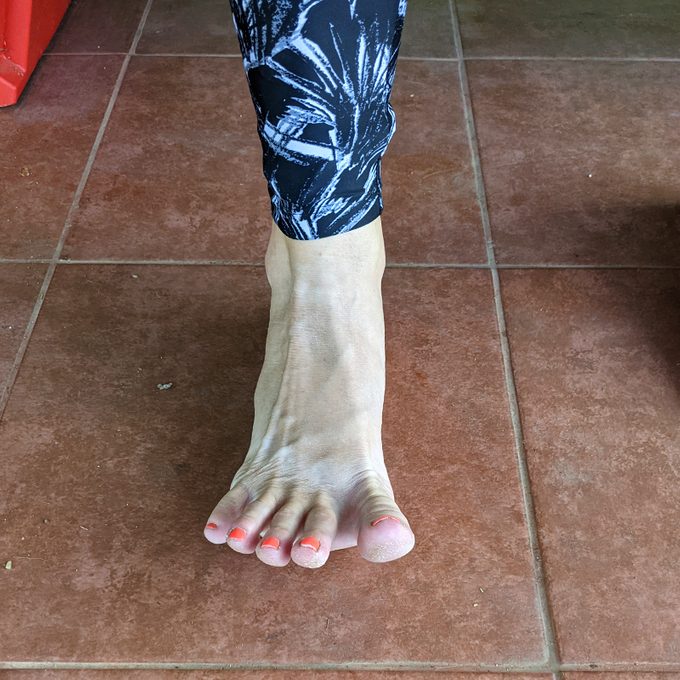
Sit in a chair with your feet planted. With the heel of your affected foot affixed to the ground, lift your toes and spread them as far apart as you comfortably can. Hold for a beat, then relax. Repeat 20 times on each foot.
(Got ball of foot pain? Here’s why it hurts and what to do.)
Ball rolling
Whenever joint immobilization takes place, tight muscles can contribute to more immobility and pain. By using a ball, like a golf ball, tennis ball, lacrosse, ball, or baseball, you can help loosen up the muscles of your feet, including those that affect your great toe.
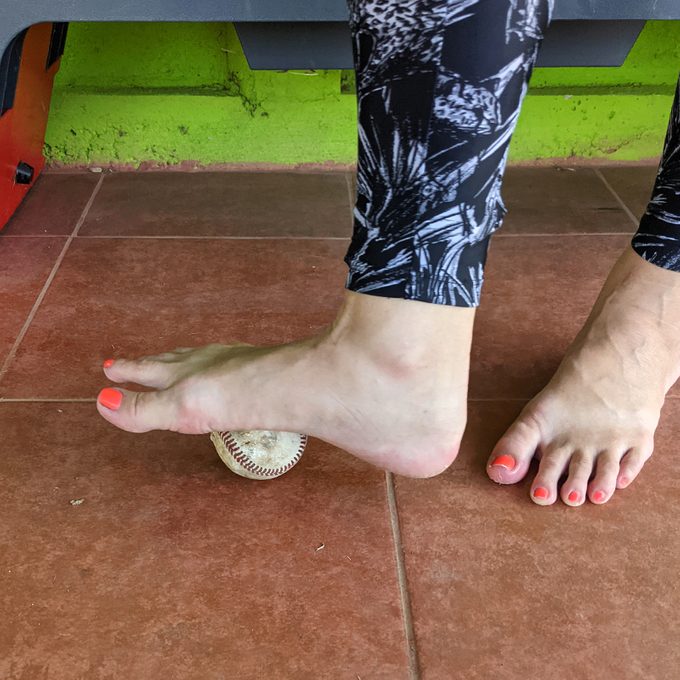
How to do it
Stand next to a chair or wall and place a ball on the ground. Use the chair or wall for support. Lift your affected foot and place it on top of the ball, then simply roll the ball up and down and across your foot, massaging the muscles on the underside of your foot for three to five minutes before switching feet.
(Be on the lookout for these plantar fasciitis symptoms.)
Great toe range of motion
A bunion forms when the position of the big toe is altered, which also leads to changes in range of motion. This exercise aims to maintain range of motion, and—if some of the issue is a result of muscle tightness—help ease the tightness and reduce resulting pain.
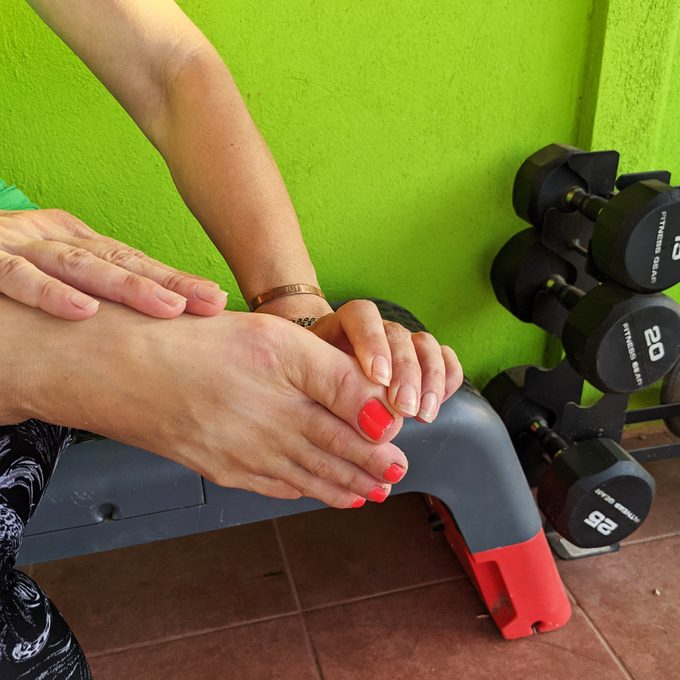
How to do it
Sit in a chair and position your affected foot across your opposite thigh so you can easily grasp it with your strong hand. With your fingers, hold the great toe and lift it up from the first joint (the base of the toe) as high as you can. Hold the position for 30 seconds.
Then, use your fingers to hold and press the toe down from the first joint as low as you can. Hold for 30 seconds. Then, move your great toe as far in toward your midline as you can (adduction), then as far out away from your midline (abduction) as you can. Hold each position for 30 seconds. Do 10 total repetitions per position before switching feet.
(Abduction vs. adduction: know the difference to avoid injury.)
Great toe self-traction
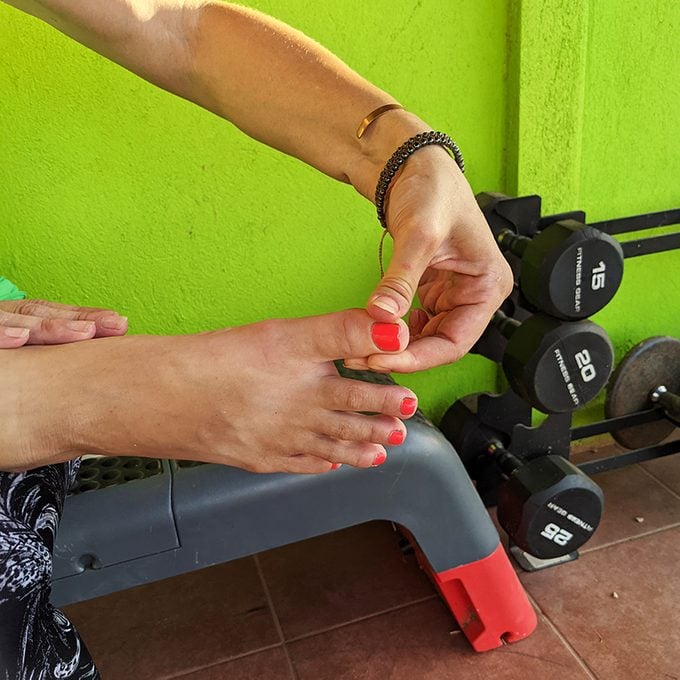
Sit in a chair and position your affected foot across your opposite thigh so you can comfortably grasp it with your strong hand. With your strong hand, grip your big toe and very gently, pull it straight out, holding for five to 10 seconds before releasing. Repeat three to six times before switching feet.
(Find out if toe separators can really help with foot pain.)
Foot intrinsic strengthening with a towel
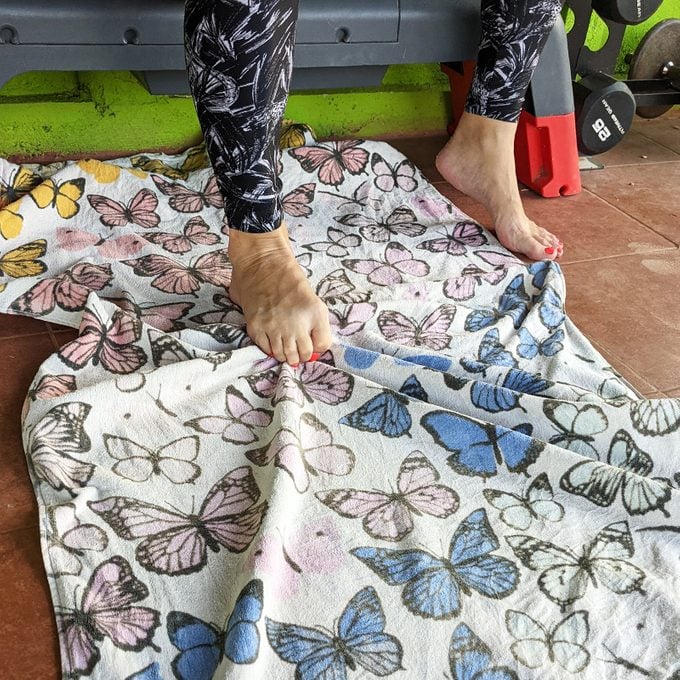
Sit in a chair and place a towel on the floor in front of you. Place your affected foot on the end of the towel. Use your toes to “crunch” the towel and pull it toward you. Continue until you’ve pulled the opposite end of the towel to your toes, then repeat with the opposite foot.
Next, here are common foot problems and podiatrists’ solutions.





















